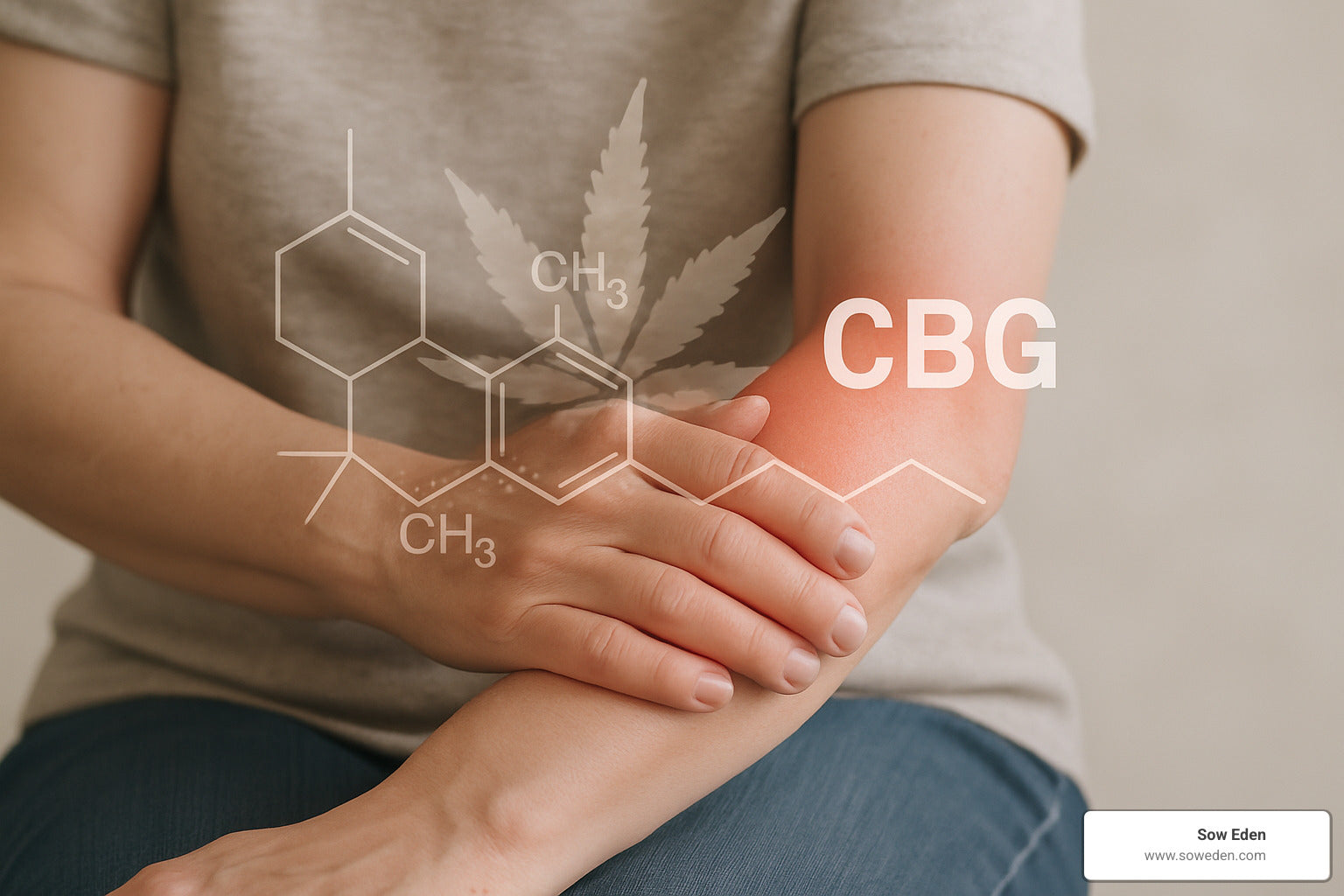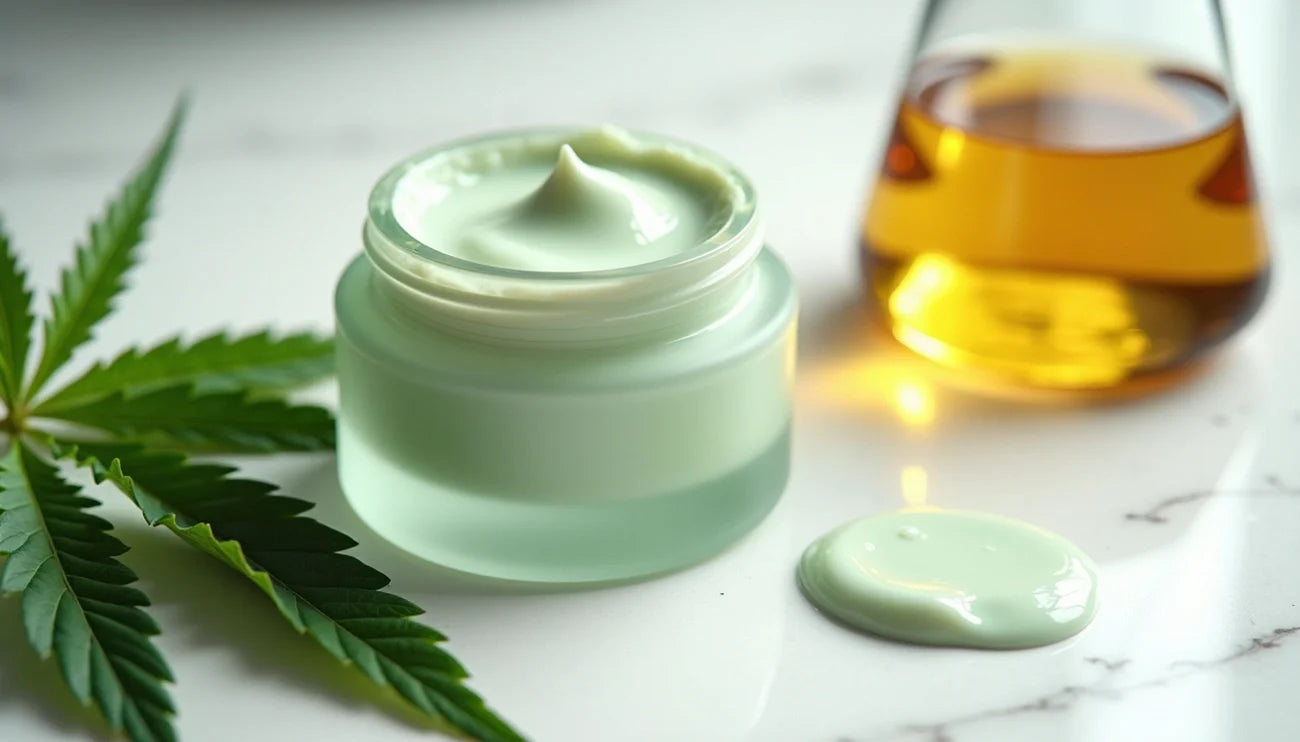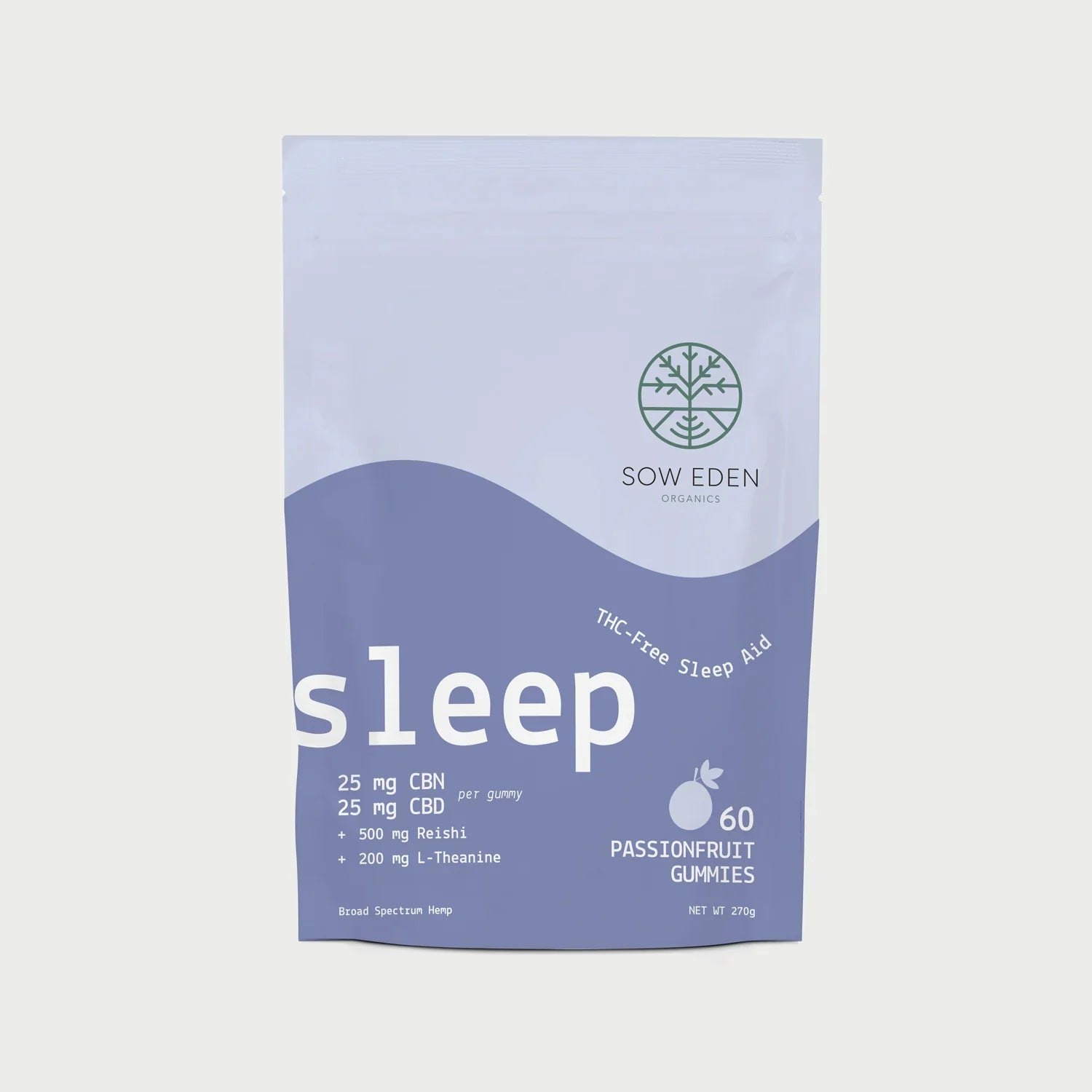Understanding CBG as a Natural Option for Nerve Pain Relief
CBG for nerve pain is drawing interest as an additional, plant-based way to address neuropathic discomfort. Early data—mainly from animal models—suggests CBG may influence several pain-related pathways without causing a “high.”
Key take-aways:
• Mechanisms: CB2 receptor support and possible Nav1.8 sodium-channel modulation
• Findings so far: Reduced mechanical hypersensitivity in rodent neuropathy studies
• Safety: Non-intoxicating; mild, transient side-effects noted in pre-clinical work
• Use cases under review: chemotherapy-induced neuropathy, inflammatory nerve pain
• Legality: Hemp-derived CBG (< 0.3 % THC) is federally legal in the U.S.
Millions live with conditions such as diabetic neuropathy, post-surgical nerve pain, and fibromyalgia. Standard options—gabapentinoids, antidepressants, or opioids—can help yet often bring drowsiness, tolerance, or other concerns. CBG offers a different approach by engaging the body’s endocannabinoid system (ECS) and other channels involved in nerve signalling.
As Jacob Dunn, CEO of Sow Eden Organics, I’ve watched demand rise for cannabinoids that provide daytime clarity. Because CBG is non-psychoactive and tends to feel “alert but calm,” many wellness-minded individuals see it as a tool they can add without major lifestyle disruption.

What Is CBG and Why It Matters for Nerve Pain
CBG (cannabigerol) is often called the mother cannabinoid because most other cannabinoids start out as its acidic form, CBGA. Only a small fraction remains as CBG by harvest time, so it’s considered a minor compound—yet growers now cultivate high-CBG hemp to make it more accessible.
What separates CBG for nerve pain from CBD or THC is its receptor profile. Lab studies show direct interaction with CB2 receptors in peripheral nerves and modulation of TRPV1 channels. It also appears to influence Nav1.8 sodium channels—key players in pain signal transmission.
| Cannabinoid | Intoxicating? | Primary Targets | U.S. Legal (hemp-derived) |
|---|---|---|---|
| CBG | No | CB2, TRPV1, Nav1.8 | Yes |
| CBD | No | Indirect ECS support | Yes |
| THC | Yes | CB1 & CB2 | ≤0.3 % THC only |
Because CBG is clear-headed and federally legal when sourced from hemp, it can be used throughout the day without the cognitive clouding sometimes reported with THC-rich products.
How CBG Works With the Endocannabinoid System
• CB2 activation: may stimulate local β-endorphin release, supporting natural analgesia
• TRPV1 modulation: brief activation followed by desensitization, similar to capsaicin creams
• Nav1.8 influence: recent PNAS data shows CBG can dampen these pain-carrying channels in sensory neurons
By engaging several pathways at once, CBG is being explored as a multi-target option for hard-to-manage nerve discomfort.
How CBG May Ease Nerve Pain
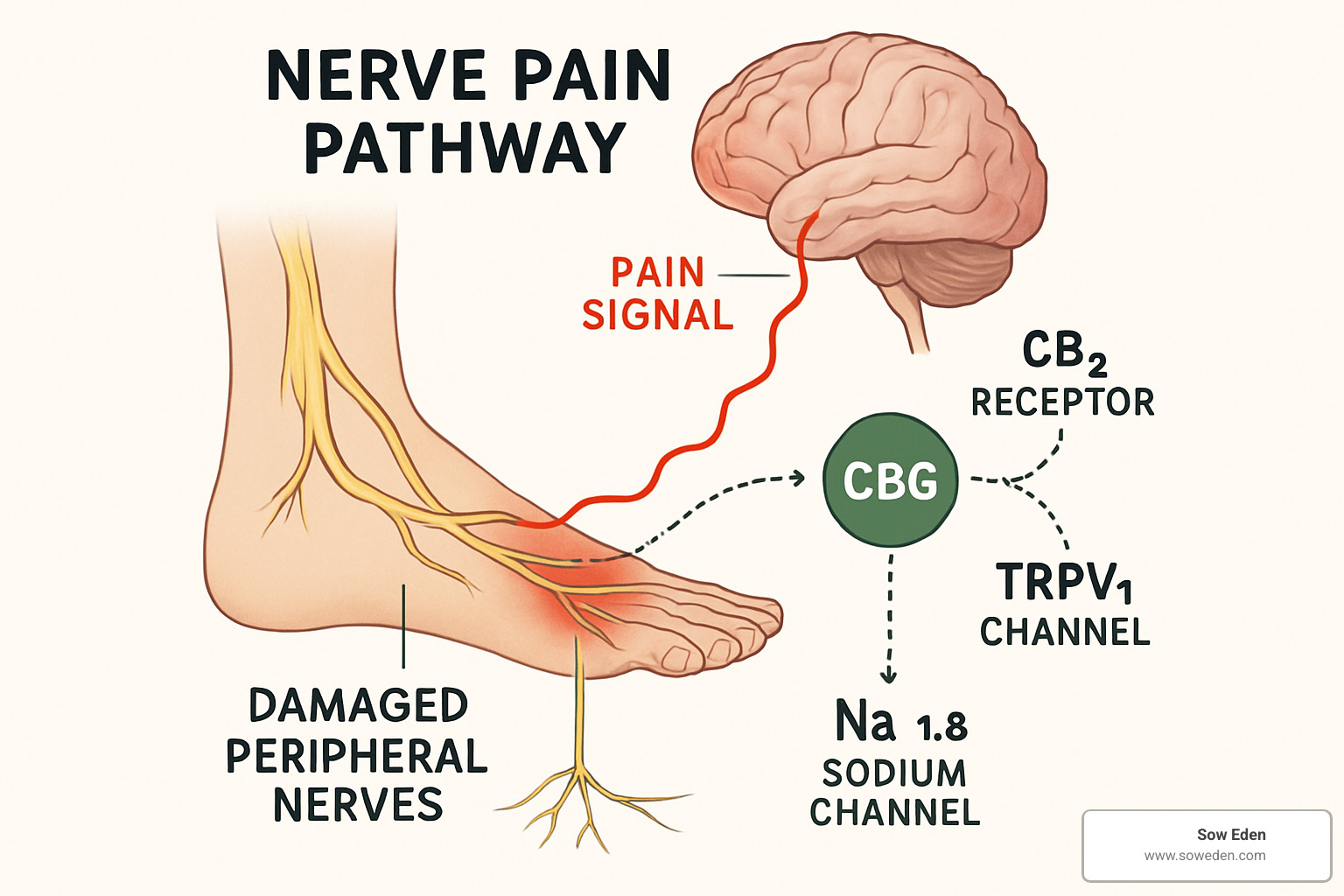
Neuropathic pain stems from misfiring nerves rather than tissue damage, which is why typical anti-inflammatories fall short. In rodent models mimicking human neuropathy, a single CBG dose raised the paw-withdrawal mechanical threshold (PWMT)—a proxy for reduced pain sensitivity—for days to weeks.
Two Main Pathways Under Review
- CB2-linked β-endorphin support – may provide localized comfort without central intoxication.
- TRPV1 desensitization plus Nav1.8 modulation – can calm hyper-reactive pain fibres, especially mechanical hypersensitivity often seen in diabetic or post-chemo neuropathy.
Evidence Snapshot
• A 2022 study on cisplatin-induced neuropathy found CBG, especially when paired with CBD, improved mechanical pain scores in mice (doi:10.1002/ejp.2016).
• Survey of 127 CBG users: ~75 % reported better relief than previous prescriptions (self-reported, uncontrolled).
Human trials are still limited, so results should be viewed as preliminary. Nonetheless, converging animal data and early user feedback make CBG a promising research avenue.
Comparing CBG to Common Pain Options
| Approach | Typical Concerns | CBG Differences |
|---|---|---|
| Opioids | Dependence, tolerance, respiratory depression | Non-intoxicating; no known breathing suppression |
| Gabapentinoids | Dizziness, cognitive fog | Generally clear-headed in most users |
| NSAIDs | GI or cardio risk, weak for neuropathy | Targets different pathways more relevant to nerve signalling |
Pre-clinical safety work shows CBG to be well-tolerated. Reported side-effects are mild (dry mouth, brief blood-pressure dip, occasional drowsiness). Begin low and monitor if you take medications processed by the liver.
Popular Formats
• Sublingual tinctures: onset 10-15 min, ~20-30 % absorbed
• Topicals: target specific areas; skin uptake ~9.34 µg/cm²·h
• Capsules/softgels: slower onset (45-60 min) but longer action
• Sublingual strips: fast, pre-measured
Start with 5-10 mg total cannabinoids, increase gradually, and consider pairing an oral dose with a topical for layered support.
Adding CBG to Your Routine
- Consult your healthcare professional—especially if you use blood-pressure meds, anticoagulants, or seizure drugs.
- Confirm your state’s hemp rules. Products with ≤ 0.3 % THC are federally legal.
- Start low (5-10 mg or a pea-sized topical amount). Give each change several days before adjusting.
- Track results: pain scale, sleep, mood, side-effects.
- Fine-tune. Many people settle between 25-50 mg/day split into two servings.
Synergy With Other Cannabinoids
Research suggests a 1:1 CBG:CBD ratio may outperform either alone. Sow Eden blends CBG-A with botanicals like ginger root and lemon peel for added wellness support.
Quality Checklist
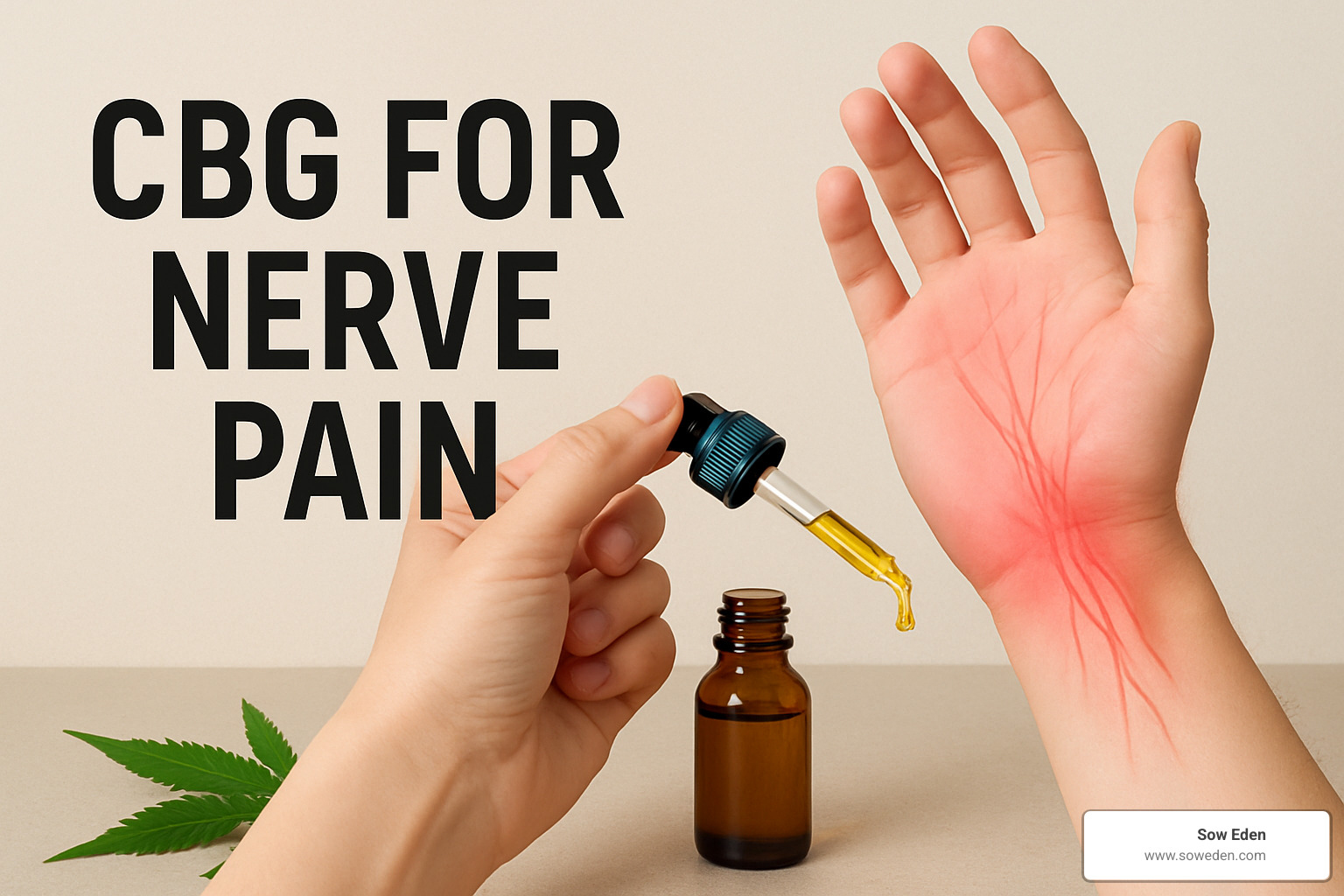
Look for:
• Third-party COAs confirming potency and purity
• CO₂ or other solvent-free extraction
• Organically grown U.S. hemp
• GMP-certified manufacturing
Frequently Asked Questions
Is CBG legal where I live?
Hemp-derived CBG products with ≤ 0.3 % THC are federally legal in the United States. A handful of states impose extra rules, so verify local regulations.
Can I combine CBG with my current prescriptions?
Possibly, but speak with your healthcare provider first. CBG may influence liver enzyme activity and can modestly lower blood pressure.
How quickly will I notice effects?
• Sublingual oil: 10-15 min
• Topical: 5-15 min on average
• Capsules: 45-60 min
For chronic issues, give a consistent daily routine 2–4 weeks before evaluating.
Conclusion
CBG offers a non-intoxicating, multi-target approach that may complement existing nerve-pain strategies. While large human trials are still forthcoming, its favourable safety profile and unique mechanisms make it an appealing option to explore under professional guidance.
Sow Eden’s focus on CBG-A paired with organic botanicals provides another path for those seeking plant-based wellness support.
For more details, visit More info about CBG blends.

